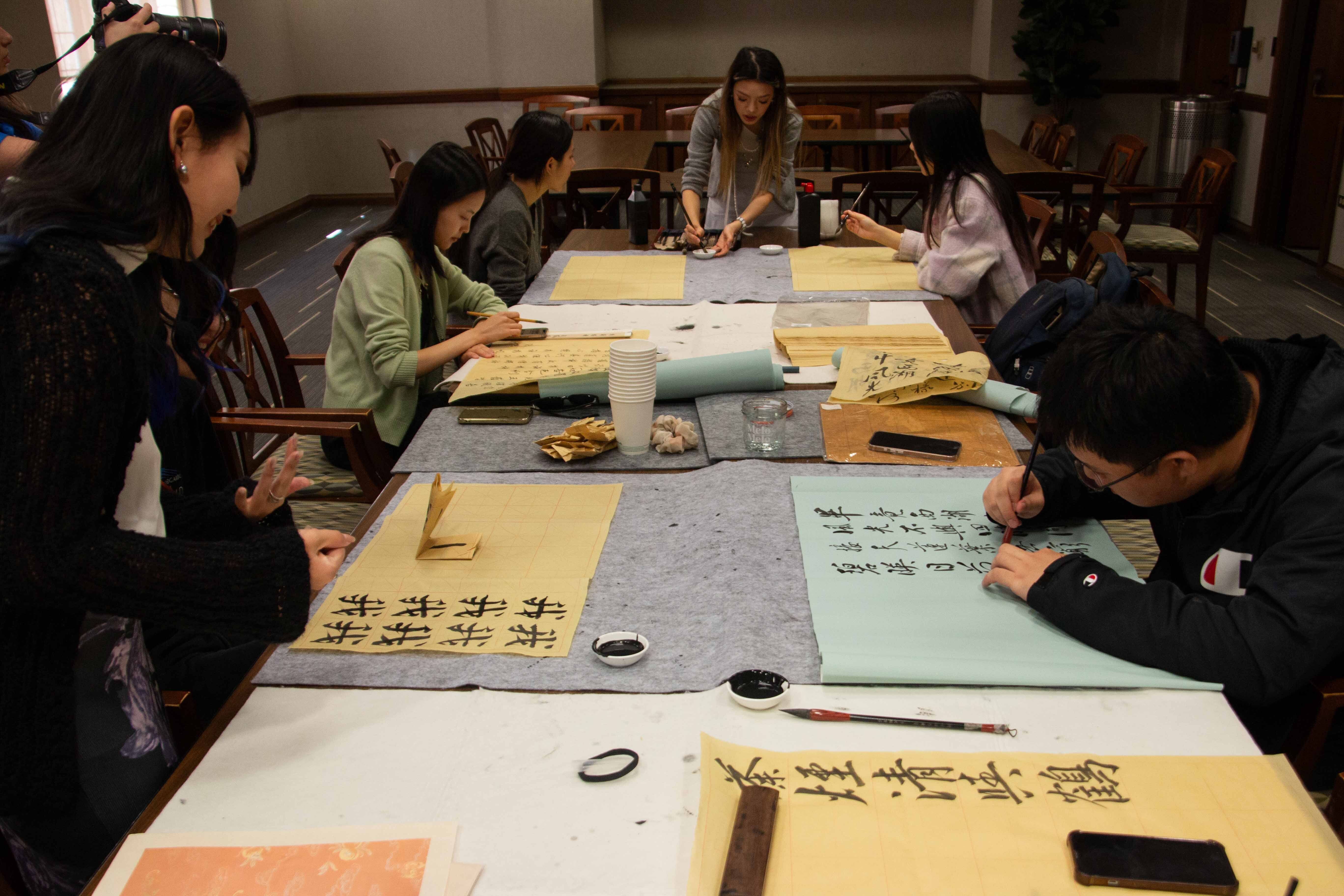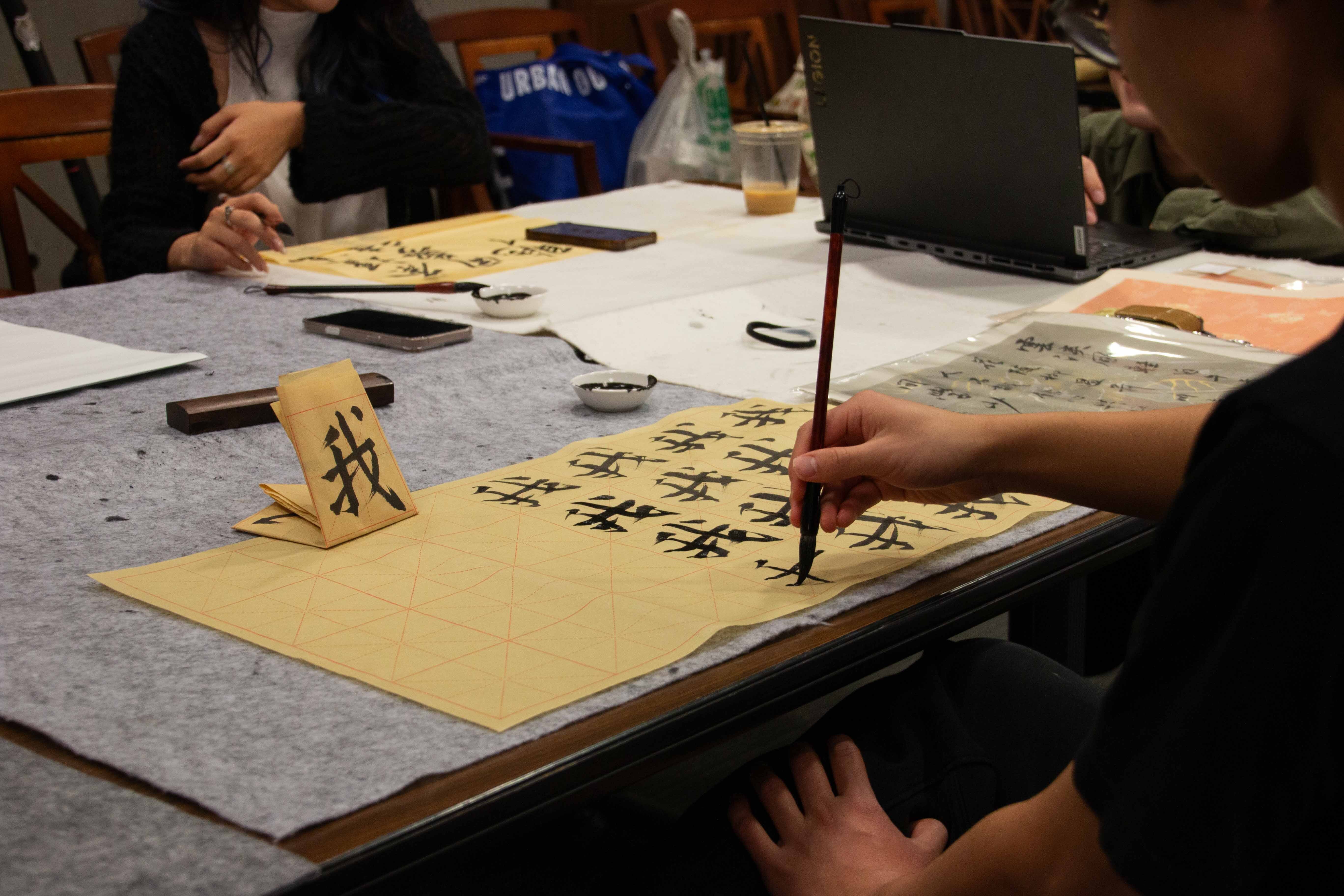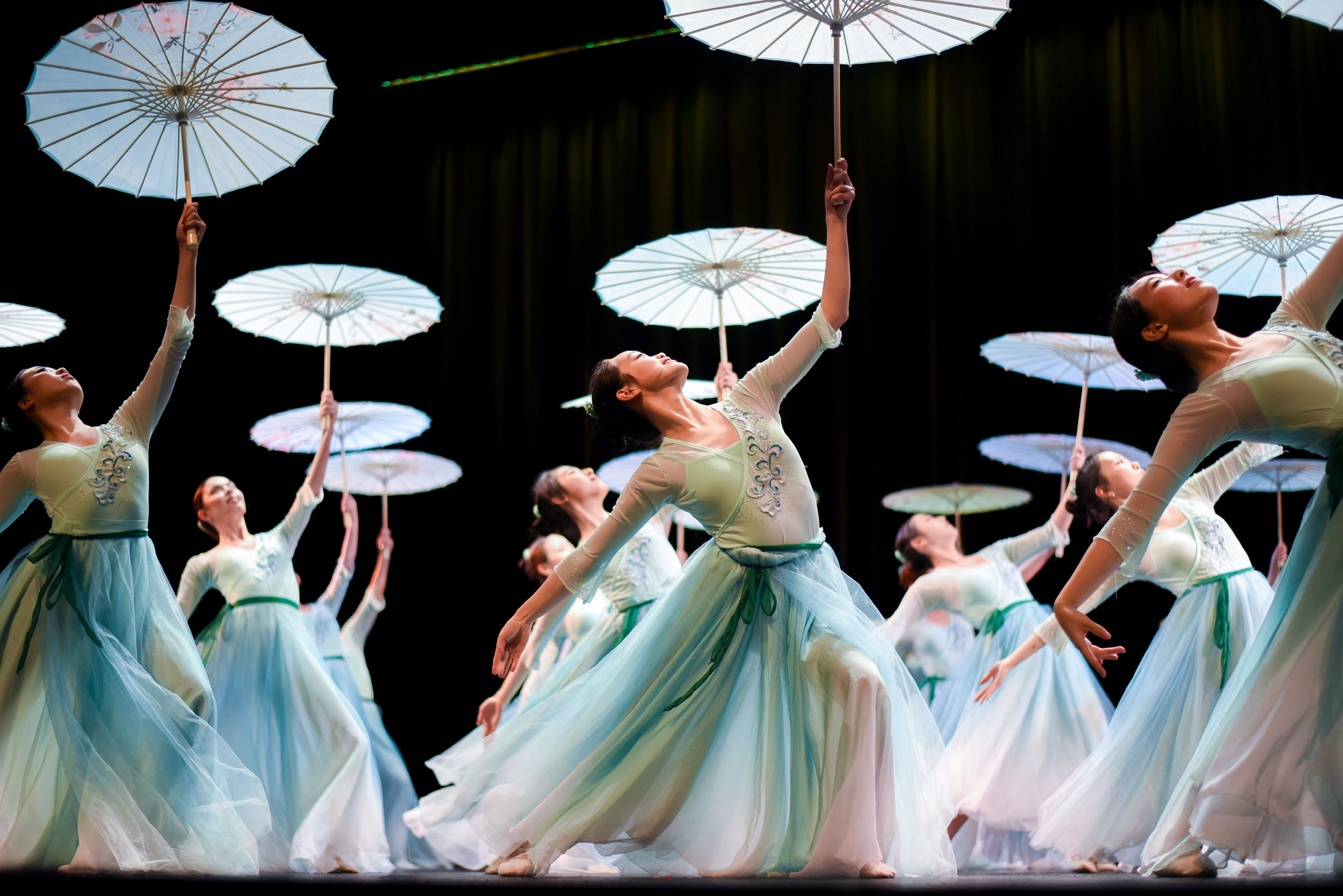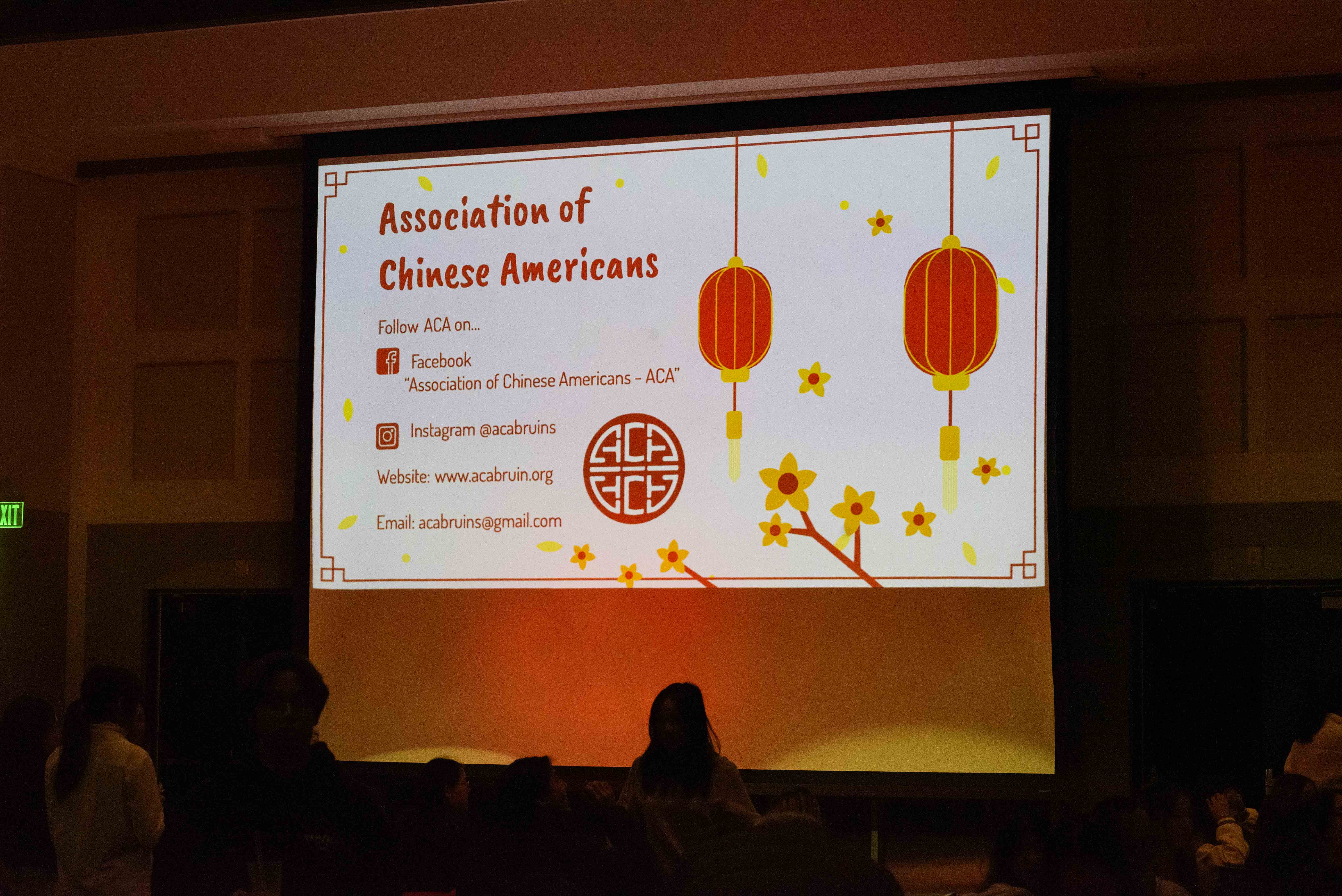Cicadas Chinese Calligraphy Club makes its mark through shared cultural heritage

The president of the Cicadas Chinese Calligraphy Club is photographed showing a group of students calligraphy techniques. The club teaches members the art through copying the styles found in old calligraphy works, showcasing traditional styles, skills and various fonts. (Isabella Appell/Daily Bruin)
By Adam Kakuk
Feb. 18, 2025 12:51 p.m.
The Cicadas Chinese Calligraphy Club draws upon ancient tradition to write a new chapter at UCLA.
Founded in 2021, the student-run organization provides a space for like-minded Bruins to develop and use their Chinese calligraphy skills. Yichen Wang, a fourth-year applied mathematics and statistics student and co-founder of the club, said the club intends to share the rich cultural heritage of Chinese calligraphy with the broader UCLA community.
“Our initiative was for cultural exchange, to welcome students from different cultural backgrounds, to join the club, to write some Chinese calligraphy as well as knowing more about the traditional Chinese culture,” Wang said.
Wang said the club welcomes everybody, irrespective of their calligraphy skill level. At a typical weekly meeting, experienced calligraphers and beginners alike gather around a table and unfurl pads, which Wang said absorb ink. They lay out sheets of special paper, dip their brushes into shallow dishes full of ink and draw Chinese characters.
Lucy Jiayun Zhang, a fourth-year theater student and co-founder, said club members typically practice calligraphy by copying old works. As club members progress in skill, she said they master several different fonts, such as the formal “kaishu” style. While the club offers instruction for beginners, Zhang said the experienced members have freedom to explore whatever aspects of calligraphy interest them.
In addition to its regular meetings, the club hosts special events to coincide with holidays, such as Chinese Lantern Festival, Mid-Autumn Festival and Lunar New Year, said Chanel Zong, a third-year European languages and transcultural studies with French and Francophone and political science student and club president. During the club’s Lunar New Year meeting in late January, Zong said members wrote Chinese couplets – 14 word poems split into two groups of seven – on red paper and stuck them to the door as a symbol of good luck.
Louisa Zhang, a second-year cognitive science student, said she joined the club after attending its Lunar New Year meeting in 2024. Now that the club has grown for another year, she said the Lunar New Year meeting in 2025 was an even bigger success.
“We had tea and snacks for everyone who came,” Louisa said. “Me and another club member wore matching red sweaters to echo the theme of the New Year.”
Hosting events is part of the club’s ongoing efforts to connect with the larger UCLA community, Zong said. The club’s Instagram page highlights its events and showcases its calligraphy, which Zong said has been integral to the growth of the organization. In addition to posting on social media, Lucy said the club exhibit its work at events such as one hosted by the Chinese Students and Scholars Association.
While reflecting on the growth of the club, Wang said it is important to bring attention to calligraphy because the art form is deeply rooted in thousands of years of Chinese history. Louisa said club members copy ancient family letters, Buddhist texts, poems and more, which range from 500 to 3,000 years old. Many of the texts are composed in Classical Chinese, which Wang said is like a Chinese equivalent to Latin. To fully master this ancient tradition, many calligraphers start learning the intricate technique in primary school, he added.
Though calligraphy is often taught systematically, Wang said calligraphers imbue their work with personal style through composition, use of fonts and thickness of brush strokes. Wang added that this feature distinguishes calligraphy as a uniquely Chinese art form, with few direct analogues in other cultures.
“When we see calligraphy masters in China, you see that, ‘Oh, this is written by him. That’s written by her,’” Wang said. “The reason that we can tell is that different people have their own style.”
Zong said Chinese calligraphy is both an ancient tradition and living art form she connected to. She said the insect featured in the club name, the cicada, similarly represents a mix of tradition and new life.
“Usually, when you hear the screaming of the cicadas, we know, ‘Oh, summer’s here. The world is functional, the seasons are seasoning,’” Zong said. “Cicada is just like a marker of healthy times, of ripe seasons. And we just like how loud, how full of vitality it is.”
Looking ahead, Wang said he foresees ripe seasons for the club as it grows increasingly multicultural. He said he wants to attract club members from non-Chinese backgrounds to foster cross-cultural exchanges. He added that the club forges bonds across culture and age – including between undergraduate and graduate students – because it is not academically focused.
“If you’re in an academic club, no matter which major you’re in, … it’s going to be almost impossible for a Ph.D. student to join the work. Probably, he’s going to join as a mentor,” Wang said. “Here, regardless of which grade you are in, how big an achievement you get in an academic field, you are here for writing some Chinese calligraphy, and you are here to entertain yourself.”

Louisa said she quit calligraphy in middle school and felt disconnected from Chinese culture for several years, but the Cicadas Chinese Calligraphy Club rekindled her passion for calligraphy and reconnected her to her culture. Even though the club is not directly related to her academic interests, she said she is glad to have found a space that makes her happy.
Similarly, Lucy said she struggled to find other people to practice calligraphy with until she co-founded the club. Over the past couple years, she said it has become more than just a club to her – it is a community.
“In high school, it was hard for me to find a place to practice and people who are doing the same thing,” Lucy said. “Coming here every week … it’s like healing, … even just two hours to practice Chinese calligraphy.”




